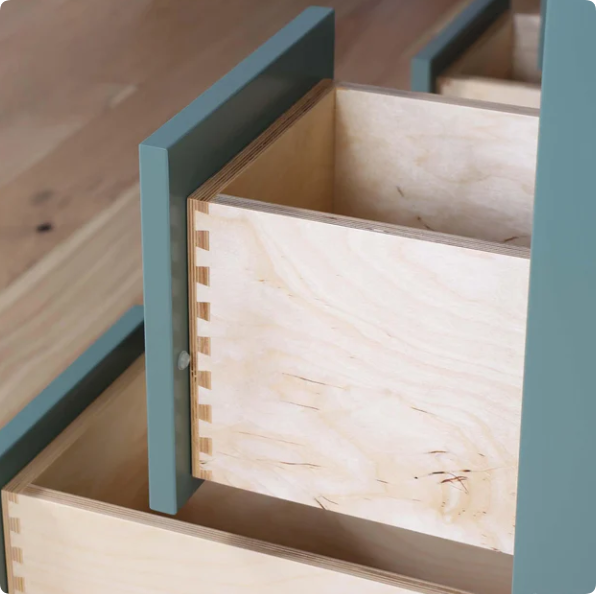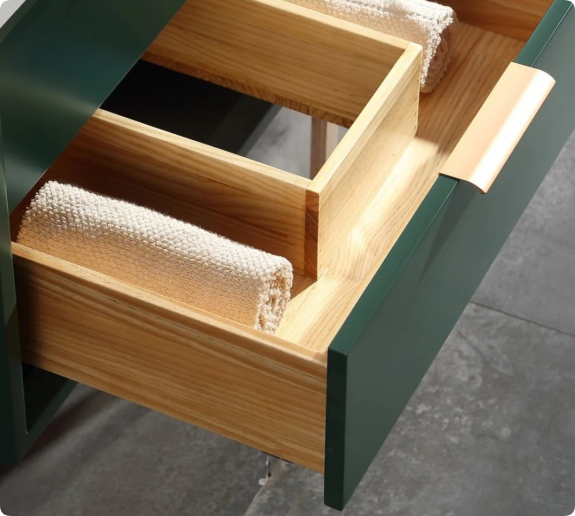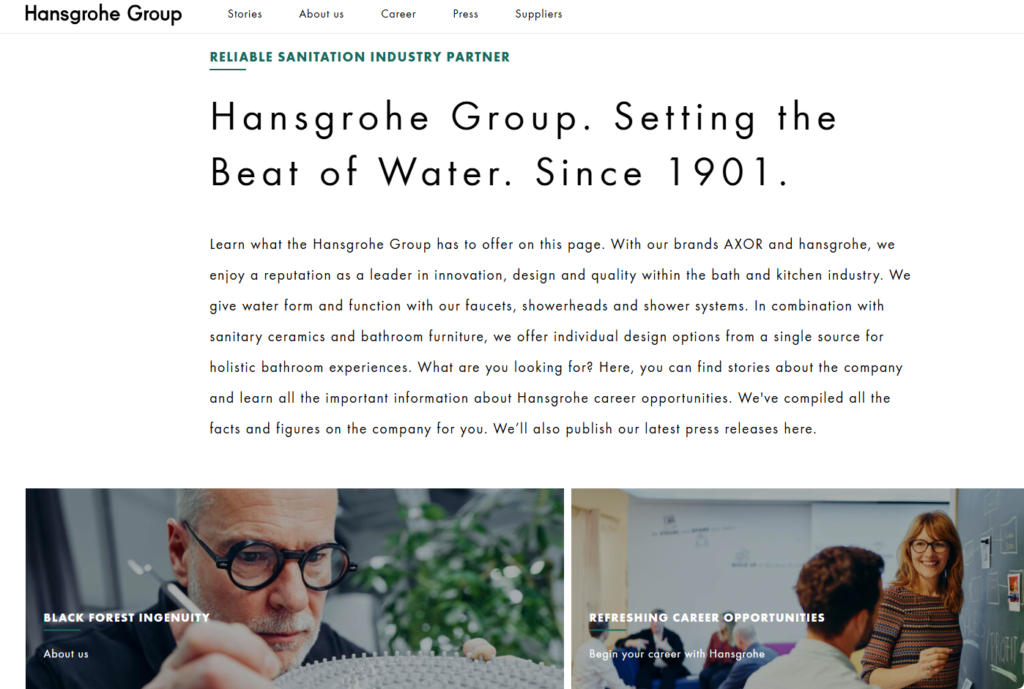In the world of bathroom design, sustainability is no longer just a buzzword—it’s an essential factor in the decision-making process for both designers and consumers. As people become more environmentally conscious, there is an increasing demand for eco-friendly materials that can meet the needs of functionality, aesthetics, and durability. Plywood, a versatile and sustainable material, plays a significant role in shaping the future of bathroom cabinetry.

In this article, we’ll explore the vital role plywood plays in sustainable bathroom cabinet design, its benefits, and why it should be a top choice for manufacturers and designers focused on sustainability. We’ll also dive into how plywood compares to other materials commonly used in bathroom cabinet manufacturing, with a focus on environmental impact and cost-effectiveness.
What is Plywood?

Plywood is an engineered wood product made by gluing together several layers of thin sheets of wood veneer. This layering process not only strengthens the material but also improves its resistance to warping, cracking, and shrinking. Plywood is known for its durability and versatility, making it a popular choice in various industries, from construction to furniture manufacturing. In the context of bathroom cabinet design, plywood provides the structural integrity needed while offering a sustainable alternative to solid wood or MDF (medium-density fiberboard).
The Benefits of Using Plywood in Bathroom Cabinet Design
When it comes to creating a bathroom that is both beautiful and sustainable, plywood stands out for several reasons:

- Eco-friendly Nature
Plywood is often made from renewable resources, such as softwood and hardwood species, and can be produced with minimal waste. Unlike MDF, which relies on synthetic resins, plywood uses less glue and is less dependent on non-renewable materials. The manufacturing process of plywood is generally more sustainable, which appeals to environmentally conscious consumers. - Durability and Strength
Bathrooms are high-humidity environments, and the materials used in cabinet construction need to be durable and able to withstand moisture. Plywood’s layered construction provides greater strength and resistance to warping, even in the moist conditions typically found in bathrooms. This makes plywood a long-lasting material that won’t compromise the quality or longevity of bathroom cabinetry. - Aesthetic Versatility
Plywood is not only functional but can also be visually appealing. The natural grain of the wood adds texture and warmth to a bathroom, creating a more inviting atmosphere. It can also be easily stained or painted to match any design style—from rustic to modern minimalist. This flexibility in finish allows designers to create truly unique bathroom spaces. - Cost-Effectiveness
When compared to solid wood or other premium materials, plywood tends to be more affordable, making it an ideal choice for designers who want to maintain a balance between quality and budget. Additionally, since plywood is lighter and easier to handle, the cost of labor during installation can be lower.
Comparing Plywood to Other Materials in Bathroom Cabinetry
To better understand the benefits of plywood in bathroom cabinet design, let’s compare it with other common materials used in cabinetry construction. The following table highlights the key differences in terms of environmental impact, cost, durability, and versatility.
| Material | Environmental Impact | Cost | Durability | Design Flexibility |
|---|---|---|---|---|
| Plywood | Low, renewable resources, minimal waste | Affordable | High moisture resistance, resistant to warping | Versatile finishes, can be painted or stained |
| MDF | High, uses synthetic glues, not recyclable | Low to moderate | Susceptible to moisture damage, may swell | Smooth surface ideal for painting, limited texture |
| Solid Wood | Moderate, deforestation concerns | High | Excellent durability but may warp with moisture | Rich natural textures, limited finish options |
| Particleboard | High, often uses non-renewable resources | Low | Low moisture resistance, prone to sagging | Limited design flexibility, mainly used for budget products |
Why Should You Choose Plywood for Your Bathroom Cabinets?
- Sustainability: A Growing Concern
Consumers are increasingly drawn to products that reduce environmental impact. As we saw in the comparison table, plywood is a far more sustainable option than many other materials commonly used in bathroom cabinetry. For companies like Danube, whose target market includes global hotel and architectural project suppliers, offering products that are sustainable can be a significant selling point. - Higher Performance in Humid Environments
Unlike MDF or particleboard, which can absorb moisture and swell, plywood resists humidity and maintains its shape over time. This makes it the ideal material for bathroom cabinets, which are frequently exposed to high levels of moisture. Plywood’s layered construction allows it to expand and contract with changes in temperature and humidity without losing its strength or structural integrity. - Long-Term Value
While solid wood and other materials may be more expensive upfront, plywood offers a balance of cost and durability that can be highly advantageous in the long term. Because it resists damage from humidity and wear-and-tear, it requires less maintenance, reducing the need for repairs or replacement. This durability means that consumers are getting excellent value for their money.
Global Brands Leading the Way in Sustainable Bathroom Cabinetry
For those looking to incorporate sustainable bathroom cabinetry into their design projects, it’s important to look at the industry leaders who are already making strides in this area. Below are five well-known brands that are recognized for their commitment to sustainability in bathroom design:
1. Duravit (Germany)
- Product Features: Duravit offers high-quality bathroom furniture with eco-friendly materials, including plywood. Their products combine timeless design with functionality, ensuring that they last longer and contribute less to landfill waste.
- Sustainability Efforts: The company is committed to using renewable resources in their manufacturing processes and minimizing the use of harmful chemicals in their products.
2. Kohler (USA)
- Product Features: Kohler’s range of sustainable bathroom vanities and cabinets feature materials like plywood and reclaimed wood. Their designs are modern and sleek, offering both beauty and durability.
- Sustainability Efforts: Kohler has a strong focus on sustainability, including water conservation efforts and using more sustainable materials in their products.
3. Villeroy & Boch (Germany)
- Product Features: Known for their high-end bathroom products, Villeroy & Boch uses eco-friendly materials such as plywood and FSC-certified wood in their cabinet designs.
- Sustainability Efforts: The company ensures that their production processes are energy-efficient and that they use resources responsibly.
4. Roca (Spain)

- Product Features: Roca has a wide range of bathroom furniture that integrates plywood and other renewable materials to create long-lasting, stylish cabinets.
- Sustainability Efforts: Roca focuses on reducing their carbon footprint and using materials that have minimal environmental impact.
5. Hansgrohe (Germany)
- Product Features: Hansgrohe offers bathroom furniture that combines modern aesthetics with functionality, using eco-friendly materials such as plywood in their designs.

- Sustainability Efforts: Hansgrohe is committed to sustainability and uses materials that are responsibly sourced to ensure that their products are both durable and eco-friendly.
FAQs
Q: What is the best material for bathroom cabinets?
A: Plywood is one of the best materials for bathroom cabinets due to its durability, resistance to moisture, and sustainability. Compared to MDF or particleboard, plywood is less likely to warp or swell in humid conditions.
Q: Is plywood more expensive than MDF?
A: Plywood is typically more expensive than MDF, but it offers greater durability and moisture resistance, making it a better long-term investment for bathroom cabinetry.
Q: Can plywood be painted?
A: Yes, plywood can be easily painted or stained to achieve the desired finish. This makes it highly versatile for different bathroom design styles.
Q: How does plywood compare to solid wood in terms of environmental impact?
A: Plywood is generally considered more sustainable than solid wood, as it is made from thinner layers of wood and can use faster-growing wood species. It also produces less waste in the manufacturing process.
Conclusion
Incorporating plywood into bathroom cabinet design is not just a sustainable choice—it’s a smart one. Its eco-friendly qualities, durability, cost-effectiveness, and aesthetic versatility make it the ideal material for creating beautiful, long-lasting bathroom furniture. Whether you’re a manufacturer looking to incorporate sustainable practices into your product line or a designer seeking the perfect material for your next project, plywood offers a unique blend of benefits that can elevate the bathroom experience.
For those in the architectural and hotel procurement industries, choosing plywood for bathroom cabinetry can help meet both sustainability goals and aesthetic expectations, while also offering excellent value. With the added benefit of being able to customize designs, Danube’s focus on high-quality, sustainable plywood-based products ensures that your next project is built to last—and to impress.
Looking for high-quality, sustainable bathroom cabinetry for your next hotel or architectural project? Explore Danube’s extensive range of plywood-based bathroom vanities, cabinets, and more!
